
Gel battery for cars
Content
For an ordinary motorist, the most important thing is not the ability of a gel battery to work in any position, but its resistance to deep discharge. Remember what will happen in this case with a classic battery: as soon as the voltage on the battery plates drops to a critical limit, the reaction of the formation of lead sulfate on the plates begins, which leads to a significant drop in voltage and electrolyte density and “fouling” of the plates with a characteristic white coating.
Recently, there has been a lot of talk among motorists about what gel car batteries are, how convenient it is to buy them, and is it true that they last much longer than well-known batteries with liquid electrolyte in their composition. It is still difficult for some to imagine that such knowledge as for a car has long been applied everywhere.
Scope of gel batteries a bit of their history
Initially, batteries with a chemical composition in the form of a gel were used exclusively in the aviation industry, to power the on-board system of aircraft in conditions of constant tilts, turns and sharp turns during flights. In aviation, batteries were needed that could withstand different temperature ranges, from high to very low. Also, with more danger, it is the thick electrolyte in the form of a gel obtained using silicon oxide that is the most optimal form for power supplies.
When the technology for the production of these batteries became widespread, their scope expanded significantly. They began to be used as energy sources for transporting water for various purposes. Starting from motor boats and ending with larger boats. They are especially convenient when used for motorcycles and scooters due to increased safety, and you will not surprise anyone with a gel power supply for a car.
How much are gel batteries from different manufacturers
Now let's see how much models with gel batteries cost in the Russian market. Below are the prices for gel battery models from various manufacturers, which are currently offered on the Internet.
Optima
This American company was one of the first to master the production of gel batteries. They mainly produce batteries with spiral electrodes.
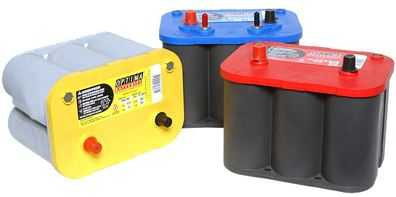
In national retail you can find red, yellow and blue models.
Below are the prices for these batteries:
- Red. Positioned by the manufacturer as a starter. Price from 15 to 16,5 thousand rubles;
- Yellow. Universal batteries for vehicles with winches, a large number of current consumers, etc. Price from 14 to 22 thousand rubles;
- Blue. The manufacturer suggests using this series for boats, boats, yachts, motor homes, etc. The price is from 19 to 24 thousand rubles.
Delta
The production facilities of this company are concentrated in China.
At retail, you can find models for 12 volts. The price range is from 6 to 36 thousand rubles.
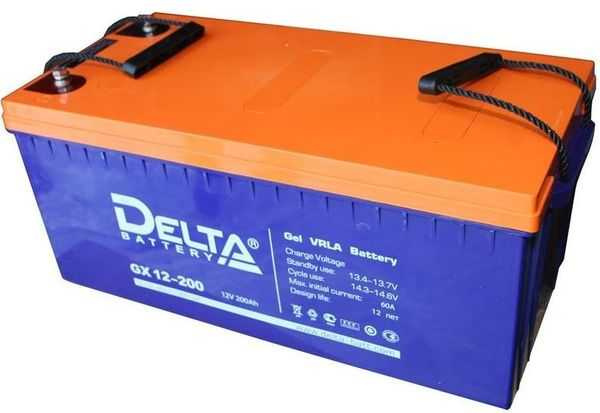
Models of such series as CT, STC and others produced using AGM technology could not be found on sale.
Varta
A well-known battery manufacturer has several lines of gel batteries in its arsenal.
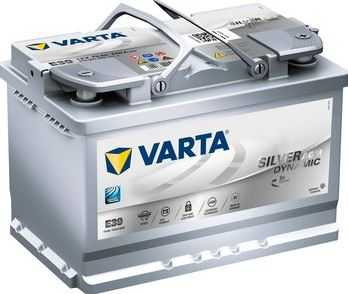
On the domestic market are:
- Power sports. These batteries are used in motorcycles. They cost from 3 to 6 thousand rubles. Among them, you can find models with a dry charge, which are sold complete with an electrolyte;
- A fun start. The series is also designed for use on motorcycles. Prices from 2,5 to 10 thousand rubles;
- Silver dynamic AGM. Accumulators for cars. Basically, they are recommended for use in cars with start-stop systems and expensive electronics. Prices from 15 to 22 thousand rubles.
Bosch
Bosch offers gel batteries of the S6 AGM HighTec series for use in luxury cars with a start-stop system. The issue price ranges from 14 to 16 thousand.
No matter how autonomous the car is, it is still, one way or another, connected to the outlet. The need for a constant source of electricity has led to the need to install batteries under the hood of every car, and their design has not changed much over the past hundred years. These are all the same lead-acid batteries that convert a chemical reaction into electricity.
Features
pros
Maintenance is not required. Everyone knows what a decrease in the electrolyte level in lead-acid batteries is, the need to search for and top up water (and not any, but distilled). When using gel batteries, all these problems are eliminated.
Minor damage to the case does not lead to a quick failure of the battery. Again, comparable to traditional batteries. Even a microscopic crack leads to the fact that the battery "discharges", as the electrolyte simply flows out. For gel samples, such damage is not critical due to the thick consistency of the conductive medium.

Gas recombination is almost 100% (for AGM batteries, for GEL models the figure is slightly lower). Left? Firstly, they do not leak, and there is no need to constantly monitor the cleanliness of the diffusion hole. It was their pollution that was one of the main reasons why old-type batteries literally exploded.
Secondly, the gases "hidden" in the pores of the separators are involved in the battery charging process, maintaining its energy intensity at a constant level. Not surprisingly, manufacturers guarantee about 400 charge / discharge cycles for gel models.
Thirdly, during the period of storage of such batteries, the self-discharge current is almost at zero level. Calculations show that the loss of capacity, even under the most unfavorable conditions, does not exceed 18–20%.
- There is no risk of spilling plates. An important advantage, since this is one of the main "sores" of conventional batteries.
- Long service life. For gel batteries, it is about 2,5 - 3 times more than for lead-acid batteries (up to 12 - 14 years).
- Maintain performance in any position. In a conventional battery, during steep descents / ascents, the electrolyte may partially splash out.
- The starting current is large. Therefore, there are usually no problems with starting the engine in any conditions (for example, in severe frost) (ideally). The following is an explanation of this item.
Cons
Sensitivity to the parameters of the supply network. For this reason, gel batteries will require a special charger, and it will not be possible to install them in any car. If the "iron horse" was originally equipped with a conventional lead-acid battery, then along with the acquisition of a gel battery, it is necessary to mount and include an intermediate block in the circuit.
The need to constantly monitor the degree of charge of the battery. For lead-acid analogs, this is not so important, but for gel batteries it is of great importance. Excessive load in many cases leads to death, up to rupture of the hull. The process of boiling the electrolyte proceeds differently than in conventional batteries. A lot of bubbles are formed, which can later be transformed into one big one. And this is a sharp increase in pressure inside the battery.
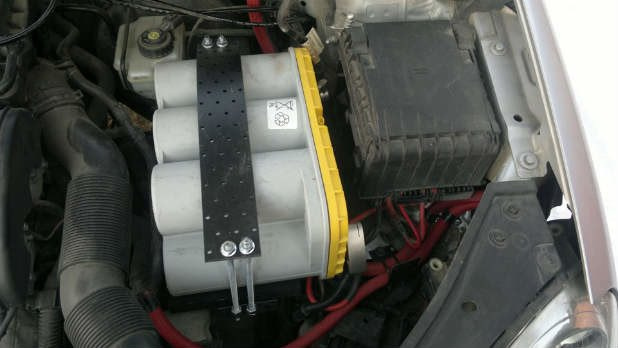
The dependence of the service life on the correct operation of the relay-regulator. Large overvoltages cause accelerated oxidation of the plates. V / capacity decreases, battery charging time increases - these are the main consequences of the negative impact of this device.
The fact is that the parameters of most relays are within (in terms of voltage, V) 13 - 16. And the gel begins to break down when the value exceeds 14,5. And this process is irreversible, so it will not work to restore the electrolyte.
The gel battery must be insulated. Constant exposure to low temperatures does not have the best effect on its durability. When hardening, the gel changes its main characteristics. Firstly, it drastically reduces the capacity of the battery, and there will be big problems starting a car that has stood all night under the window. Therefore, in addition to the battery itself, you will also need to purchase a device to heat it.
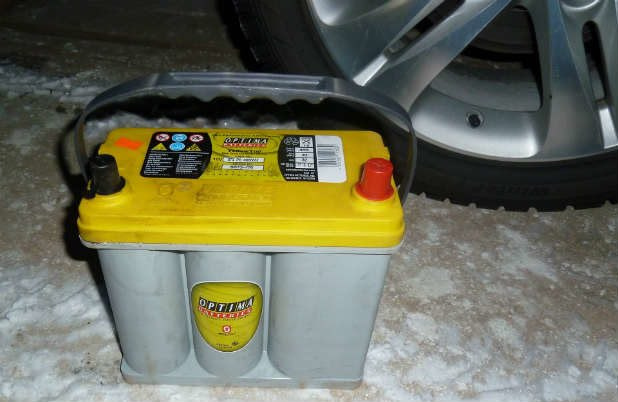
High price. For example, a battery (AGM) for 95 A / h costs about 17 rubles, while its lead-acid counterpart is in the range of 000 - 6 thousand.
Gel battery device
A key feature of a gel battery is its electrolyte: unlike other types, here silicon dioxide is introduced into the sulfuric acid solution, which turns the liquid into a gel-like substance. As a result, the electrolyte can be held between the plates in any position of the battery and at the same time serves as a kind of vibration damper - shocks and shocks from such a battery are practically not terrible, while in traditional batteries you have to use elastic plastic gaskets.

An important difference between gel batteries is their zero gas emission, which is achieved by doping the negative plates with calcium (hydrogen recombination occurs during charge and discharge cycles). The thickened electrolyte does not require space between the plates to remove the hydrogen released during charging, and this determines two valuable points at once:
- First, the ability to place the plates in a minimum space allows you to reduce the size of the battery or increase its capacity and output current.
- Second, it allows the battery to be completely sealed; more precisely, each jar is equipped with a valve set to a specific pressure required to start the hydrogen recombination reaction. Under normal operating conditions, the valves are always closed, which makes it possible to consider gel batteries as sealed, but with a sharp increase in gas formation (overcharging), the valves open, protecting the case from destruction.
With a dense arrangement of cans, there is no need to use the classic design with two parallel plates on each can. Many gel battery manufacturers coil the plates in a spiral to make the most efficient use of space; such sources of energy can be immediately recognized by the cylindrical contours of the cans.
What are the disadvantages of gel batteries
Despite the huge number of advantages, it is worth talking separately about some of the features and details of gel batteries.
It is important to know this before a possible purchase, so as not to be disappointed in the purchase later:
The first thing that can prevent a car enthusiast from making such an acquisition is a very high price, which is still on the market today.
It is known that any battery (and it does not matter whether it is Varta or the products of any other company) costs an average of 15 rubles and more.
Gel batteries, unlike cheaper, but unpretentious liquid "acid batteries", are very capricious and picky about voltage and current when charging. This needs to be watched very carefully.
On the car itself, you will need to install an additional voltage regulator relay. The fact is that "old school" machines are not adapted to technologies such as a gel power source. And the “local” relay-regulator can lower the car at any time. If the voltage of the local network on board the car is not clearly and constantly regulated, the battery quickly loses its capacity and can fail in a matter of months.
If for some reason this battery fails, it is possible to restore it, but not always. In any case, you will already lose most of your productivity, and recovery, no matter how successful it may be, will not be able to provide you with long-term work. Therefore, if you still decide to buy a gel battery, you will have to take care of buying a new relay regulator. As well as a more modern charger, with which you can clearly control the entire process of charging the battery.
Of course, such characteristics of gel batteries can hardly be called obvious “minuses”. However, it is they who can prevent the driver from making such an expensive purchase. In any case, before buying it, you should weigh all the pros and cons, and only after that go to the car shop.
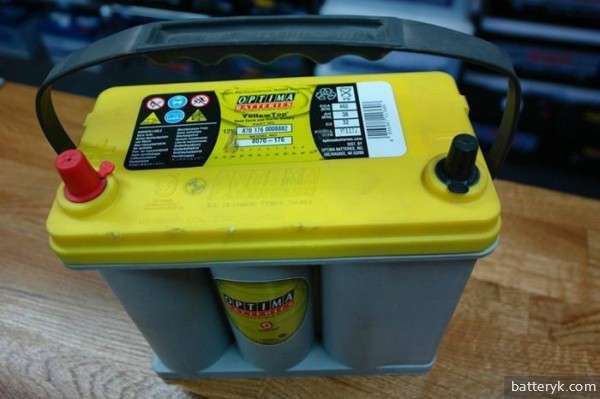
How to charge
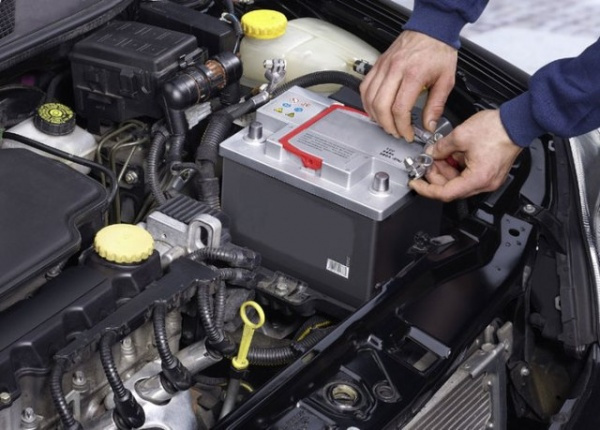
These devices are completely autonomous. However, improper use or prolonged inactivity may cause electrolyte evaporation and loss of charge. To understand whether it is worth charging a gel battery with your own hands, remove the battery and check the residual voltage, the indicator must be at least 9 V. The charging process consists of the following steps:
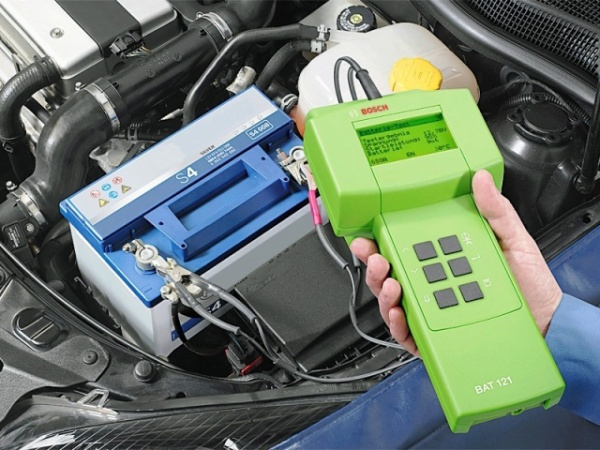
When the voltage reaches 12,5-13,3V, the device will be fully charged
. When charging a gel car battery, carefully monitor the amount of charge. A slight excess may damage the product.
How to charge a gel battery on a scooter
Most often, these devices are installed on scooters. It's about practicality and convenience. However, supervision leads to dismissal. The charging process is not very complicated. Everything can be done by hand:
- Buy a sealed lead-gel battery charger with adjustable amperage.
- Turn off the scooter.
- Set the load to 10 percent of the same size as the part (settings are printed on the box).
Charging usually takes 10-12 hours
. To avoid this situation, you need to use a multimeter more often. Helps to determine the size of the load.
Prompt!
With the right set of skills, you can make your own gel battery charger.
Cons of gel batteries
Why aren't these super-technologies so widespread? If you believe the manufacturers' guarantees, they are at least three times more efficient than conventional batteries, but not everything is so simple in our harsh conditions.
- The first drawback that these options frankly “shout” is the price. Unrealistically high, start from 15 - 16 rubles. For this amount, you can buy standard batteries of 000 or 3 pieces.
- Precise load! This is another negative situation, such batteries react very noticeably to overcharging. The regulator relay of your generator should produce 14-16 volts (maximum), if the regulator relay “covers up”, then the charge will constantly go to the battery, at high power even 17 volts will be enough, which will simply kill the battery. How it happens: the gel inside begins to melt like “snow”, but it “cannot” recover, respectively, this is a loss of capacity, loss of electrolyte and, in fact, a failure. Therefore, I would not put such batteries in our old VAZs, in which the regulator relay often breaks.
- Again, severe frosts are detrimental to the gel. At a temperature of minus 30 degrees, it loses its abilities - it becomes brittle, and also cannot hold the electrolyte with the entire “nearby”. This will wear out quickly.
- Some owners, in order not to spoil their "gel type", put special electronic devices on the terminals that monitor overloads and turn them off if they occur. That is, a kind of double relay-regulator, but more accurate and advanced. It is not cheap, and this can also be attributed to the disadvantages.
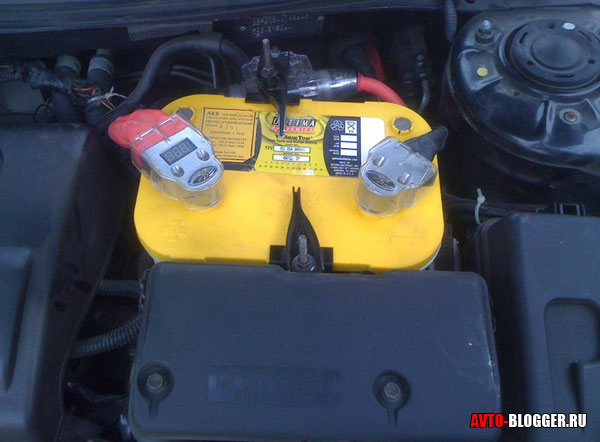
Why are gel batteries good?
As already mentioned, its main advantage is that its internal composition is in the form of a gel. If we compare the safety of such a battery with its liquid lead-acid counterparts, of course, the gel battery wins in this regard in all directions. He is not afraid of sharp turns and a forced change of position, which expands the scope of its application to universal values.
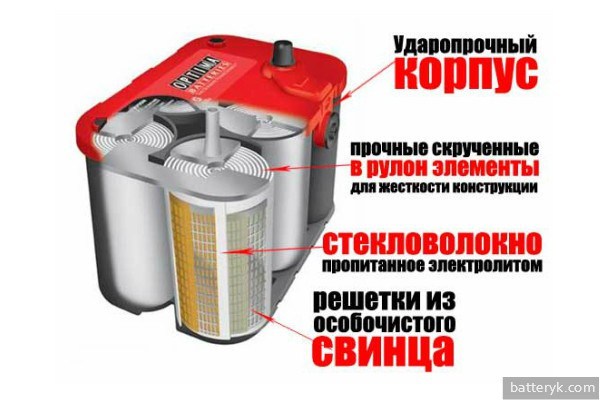
In addition to safety, there are several more obvious "pluses" of these batteries, which I would like to mention below:
- The gel prevents premature destruction of lead plates in batteries; Thanks to this, the battery lasts a long time.
- Lead plates of gel batteries are made of high-quality purified lead, without any impurities. It also prevents premature sulfation. Due to the low resistance, these batteries charge faster.
- The starting currents of such batteries are much stronger than those of liquid "acid batteries", as a rule, one and a half, or even two times. This is a huge advantage in harsh winter conditions when the battery needs to use much more energy to start the internal combustion engine.
- The gel, poured between the plates, performs a dielectric function. This prevents them from touching each other and thus prevents short circuits.
- Gel batteries do not need to be recharged with electrolyte, measuring its density and distilled water, unlike liquid batteries. They are often completely neglected (although there are reports of partially refurbished versions already on the market).
- Its case is so sealed and durable that if necessary, the battery can be put on its side and even turned over. But the producers themselves, of course, will not appreciate such treatment.
- Their service life, according to manufacturers, is much longer than that of liquid lead-acid batteries. It is from six to ten years, provided it is properly maintained.
- If for some reason such a battery is not used for a long time, it retains optimal performance much longer and is more resistant to phenomena such as self-discharge.
How to charge
The output voltage of most gel batteries is the same as the cheapest "acid batteries" - 12 volts. The container, as usual, is attached to the battery box. The question of how to charge a gel battery can be answered as follows: charging is done in the same way as any other battery, depending on its capacity and output voltage. But while charging, you need to carefully look at all the indicators.
The internal structure of a gel battery, except for the shape of the filler, is not much different from conventional batteries. Inside are the same (but only better) lead plates and six "jars" with lids on top. The battery case also has a pair of vents through which hydrogen gas generated during the charging process escapes.
When starting to charge this battery, remember that even a slight excess of voltage over the recommended values \u10b\u60bcan eventually "ground" the battery in a matter of minutes. The battery charge current should not exceed 6 percent of the battery capacity indicated on the box (if you have a XNUMX Ah battery, set the charge current to XNUMX amps).
As for the voltage, it should not exceed 14,4 volts. On the battery box, the voltage that must be set during charging is indicated by the phrase Cycle use.
So, step by step instructions for downloading:
Connect the charger to the battery, observing polarity.
Set the charger to a current equal to 10 percent of the battery capacity indicated on the battery box.
As soon as the battery begins to charge, U will rise, it is important to make sure that it does not exceed 14,4 volts. If it goes up, you need to decrease the current.
The time to fully charge a gel battery is usually 10-12 hours. This is a standard charging scheme that is suitable for any type of battery
However, some motorists advise to reduce the charging current by half and in this mode charge the gel battery longer - about a day. If there is time and opportunity to charge the battery in this mode, its life can be increased.
This is a standard charging scheme that is suitable for any type of battery. However, some motorists advise to reduce the charging current by half and in this mode charge the gel battery longer - about a day. If there is time and opportunity to charge the battery in this mode, its resource can be increased.
Of course, the requirements for a charger in the case of purchasing such a battery are greatly increased. It is recommended to purchase a charger with automatic adjustment of current and voltage indicators. The charger should at least be able to regulate the current, and even better if it has the ability to charge in stages, a mode specially designed for charging gel batteries.
As you can see, gel car batteries are definitely a valuable and worthwhile purchase. However, they require additional financial investments, which will affect both your car (when buying an additional relay-regulator) and a more advanced type of charger. Therefore, it should come primarily from your financial capabilities and your desire to get used to the intricacies of handling a gel battery.

